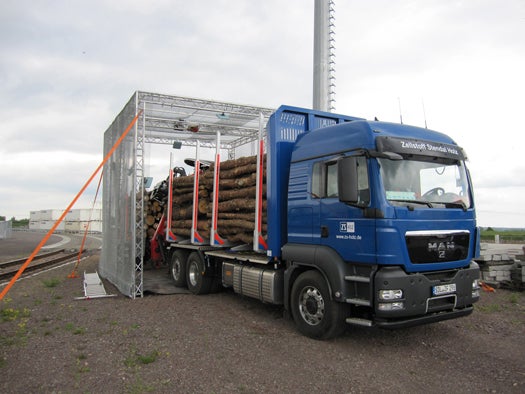RFID Chips Can Be Made of Wood, to Tag Trees Without Adulterating the Timber
Fraunhofer Labs are making chips without metal

Tagging trees with embedded RFID tags not only helps logging companies keep track of the origin and destination of timber on the truck, but it helps keep companies honest and aids in the prosecution of illegal logging operations. But those RFID chips, unless they’re expensively removed from each tree individually before processing, can end up adding impurities to high-quality wood pulp products and lumber further down the production line. So Fraunhofer Institute researchers have developed a simple fix: RFID tags made of wood.
Of course, a radio-frequency identification (RFID) chip requires a metal antenna to receive and transmit tiny amounts of data, but that amount of metal is negligible, imparting less impurity to wood products than many other existing factors affecting timber quality. The rest of the chip is composed of wood and lignin, a complex compound derived from the cell walls of plant cells.
The chips themselves can’t hold a whole lot of information, but for the purposes of the timber industry the tags only need to carry an ID number that’s scanned by RFID readers at timber mills and shipping hubs. The rest of the information regarding the timber — origin, date it was logged, date it was shipped, where it’s going, etc. — is stored in the logging company’s computer system.
In theory, a truckload of timber only requires one or two RFID tags provided the shipment is all destined for the same place and purpose. If those few RFID tags are made mostly of wood they can harmlessly pass through the production process without mixing metals into the end product, saving companies the time of trying to dig out metal tags or the headache of producing a product with impurities.